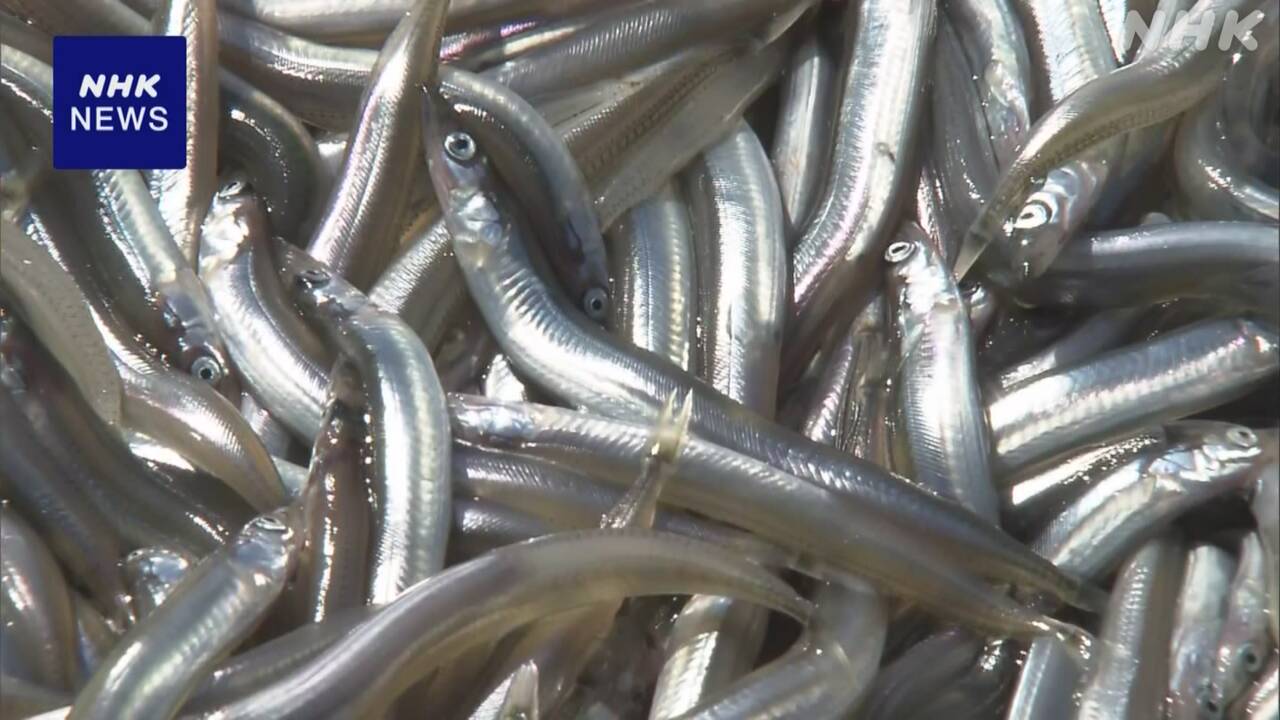On the 11th, sand eel fishing, which heralds the arrival of spring in the Seto Inland Sea, was lifted in the Harima-nada Sea of Hyogo Prefecture, but the catch was low and local fishermen were forced to stop fishing after one day in order to secure resources. I did.
Harima Nada in Hyogo Prefecture and Osaka Bay are some of the best fishing grounds in Japan for sand eel, which is known for its stew called ``kugini,'' but in recent years, the catch has been severely poor.
This season, due to extremely low resources, fishing will not take place in Osaka Bay, and fishing only began in the Harimanada Sea from the 11th.
Of these, fishing boats went out to sea early in the morning at Hayashizaki Fishing Port in Akashi City, and the first catch was made around 10:30 a.m.
The catch on the first day was only about 500 kilograms, and the first auction brought the highest price ever at about 6,800 yen per kilogram.
Tsugumitsu Kurushima, head of the Guidance Department at the Hayashizaki Fisheries Cooperative Association, said, ``We had predicted that the amount of resources would decrease and the number of catches would be low, but when we saw the actual catches, we realized how difficult it would be. I hope everyone enjoys this spring tradition."
After this, long lines of people waiting to buy freshly caught sand eels formed at fresh fish stores in Akashi City, but they were sold out by around noon.
A couple in their 70s who bought 8 kilograms of squid eel for 7,000 yen per kilo said, ``It was very expensive, so I cut back on the amount I bought this year.If this price continues, I might stop making kugi-ni next year.'' ” he said.
The president of a fresh fish store said, ``We have very little catch, so we have no choice, but in the 50 years we've been in this business, this is the first time we've sold at such a price.''
In order to protect resources, local fishermen considered how long they would continue fishing for sand eel this year, and decided to end the fishing operation after one day.
The reason for the continued severe poor fishing is...
The sand eel fishery in Hyogo Prefecture has been experiencing a serious lack of catches recently.
According to Hyogo Prefecture, the annual catch of sand eel in the prefecture ranged from 15,000 tons to 30,000 tons until about 20 years ago, but since 2017 it has increased from 1,000 tons to 1,700 tons. This means that it has remained at around 1/10.
In 2020, which was a record low catch, the catch remained at a record low of 142 tons.
The Fisheries Technology Center in Hyogo Prefecture, which conducts research and research on sand eel, believes that the cause of the recent poor catch may be a lack of plankton or a rise in seawater temperature.
As water quality improves and nutrient salts such as nitrogen and phosphorus decrease, there is a shortage of plankton, which is the food for sand locusts, and the number of sand locusts that are not eating enough food is becoming more and more bluish.
The lack of plankton is also thought to be affecting the number of sand locust eggs.
A survey conducted by the Fisheries Technology Center in 2018 found that the number of eggs per sand eel has decreased by approximately 30% compared to 30 years ago.
Fishermen have taken measures such as not catching sand locusts larger than a certain size that can lay eggs, but the stock has not recovered.
In addition, as a result of continued warm days and rising seawater temperatures, we have heard from fishermen that large fish that would go to warmer waters in winter are staying in the Harimanada Sea and Osaka Bay. It is also possible that sandfish are being preyed on by these fish.
Rising seawater temperatures are making it difficult for sand locusts themselves to grow.
Ikanago is popular for its sweet and spicy ``Kugini''.
It is a valuable fish that is rarely seen.

